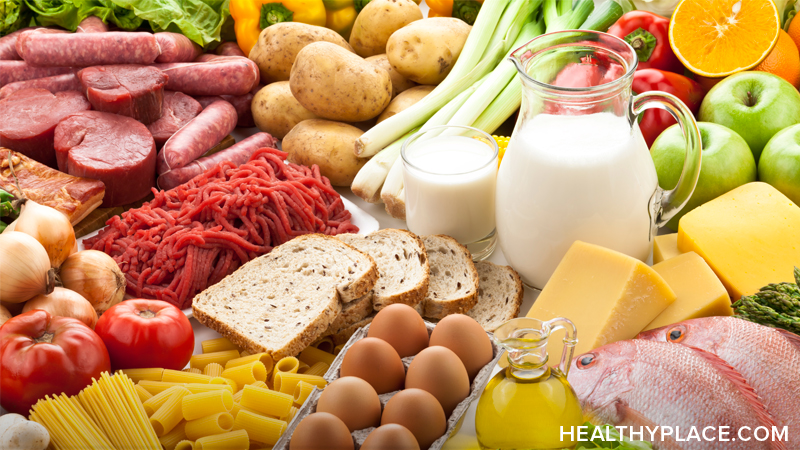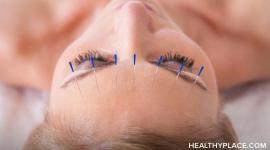Zinc

Detailed information about Zinc, signs and causes of zinc deficiency and who may need extra zinc and zinc supplements.
- Zinc: What is it?
- What foods provide zinc?
- What is the Recommended Dietary Allowance for zinc for infants, children, and adults?
- Table 1: Recommended Dietary Allowance for zinc for infants over 7 months, children and adults
- When can zinc deficiency occur?
- Signs of zinc deficiency
- Who may need extra zinc?
- What are some current issues and controversies about zinc?
- What is the health risk of too much zinc?
- Table 2: Upper Levels for Zinc for Infants, Children, and Adults
- Table 3: Selected Food Sources of Zinc
- References
Zinc: What is it?
Zinc is an essential mineral that is found in almost every cell. It stimulates the activity of approximately 100 enzymes, which are substances that promote biochemical reactions in your body (1,2). Zinc supports a healthy immune system (3,4), is needed for wound healing (5), helps maintain your sense of taste and smell (6), and is needed for DNA synthesis (2). Zinc also supports normal growth and development during pregnancy, childhood, and adolescence (7, 8).
What foods provide zinc?
Zinc is found in a wide variety of foods (2). Oysters contain more zinc per serving than any other food, but red meat and poultry provide the majority of zinc in the American diet. Other good food sources include beans, nuts, certain seafood, whole grains, fortified breakfast cereals, and dairy products (2,9). Zinc absorption is greater from a diet high in animal protein than a diet rich in plant proteins (2). Phytates, which are found in whole grain breads, cereals, legumes and other products, can decrease zinc absorption (2, 10, 11).(Refer to Table 1: Selected Food Sources of Zinc lists a variety of dietary sources of zinc.)
What is the Recommended Dietary Allowance for zinc?
The latest recommendations for zinc intake are given in the new Dietary Reference Intakes developed by the Institute of Medicine. Dietary Reference Intakes (DRIs) is the umbrella term for a group of reference values used for planning and assessing nutrient intake for healthy people. The Recommended Dietary Allowance (RDA), one of the DRIs, is the average daily dietary intake level that is sufficient to meet the nutrient requirements of nearly all (97-98%) healthy individuals (2). For infants 0 to 6 months, the DRI is in the form of an Adequate Intake (AI), which is the mean intake of zinc in healthy, breastfed infants. The AI for zinc for infants from 0 through 6 months is 2.0 milligrams (mg) per day. The 2001 RDAs for zinc (2) for infants 7 through 12 months, children and adults in mg per day are:
Table 1: Recommended Dietary Allowances for Zinc for Infants over 7 months, Children, and Adults
| Age | Infants and Children | Males | Females | Pregnancy | Lactation |
| 7 months to 3 years | 3 mg | ||||
| 4 to 8 years | 5 mg | ||||
| 9 to 13 years | 8 mg | ||||
| 14 to 18 years | 11 mg | 9 mg | 13 mg | 14 mg | |
| 19+ | 11mg | 8 mg | 11 mg | 12 mg | |
| Results of two national surveys, the National Health and Nutrition Examination Survey (NHANES III 1988-91) (12) and the Continuing Survey of Food Intakes of Individuals (1994 CSFII) (13) indicated that most infants, children, and adults consume recommended amounts of zinc. | |||||
When can zinc deficiency occur?
Zinc deficiency most often occurs when zinc intake is inadequate or poorly absorbed, when there are increased losses of zinc from the body, or when the body's requirement for zinc increases (14-16).
Signs of zinc deficiency include growth retardation, hair loss, diarrhea, delayed sexual maturation and impotence, eye and skin lesions, and loss of appetite (2). There is also evidence that weight loss, delayed healing of wounds, taste abnormalities, and mental lethargy can occur (5, 15-19). Since many of these symptoms are general and are associated with other medical conditions, do not assume they are due to a zinc deficiency. It is important to consult with a medical doctor about medical symptoms so that appropriate care can be given.
Who may need extra zinc?
There is no single laboratory test that adequately measures zinc nutritional status (2,20). Medical doctors who suspect a zinc deficiency will consider risk factors such as inadequate caloric intake, alcoholism, digestive diseases, and symptoms such as impaired growth in infants and children when determining a need for zinc supplementation (2). Vegetarians may need as much as 50% more zinc than non-vegetarians because of the lower absorption of zinc from plant foods, so it is very important for vegetarians to include good sources of zinc in their diet (2, 21).
Maternal zinc deficiency can slow fetal growth (7). Zinc supplementation has improved growth rate in some children who demonstrate mild to moderate growth failure and who also have a zinc deficiency (22). Human milk does not provide recommended amounts of zinc for older infants between the ages of 7 months and 12 months, so breast-fed infants of this age should also consume age-appropriate foods containing zinc or be given formula containing zinc (2). Alternately, pediatricians may recommend supplemental zinc in this situation. Breastfeeding also may deplete maternal zinc stores because of the greater need for zinc during lactation (23). It is important for mothers who breast-feed to include good sources of zinc in their daily diet and for pregnant women to follow their doctor's advice about taking vitamin and mineral supplements.
Low zinc status has been observed in 30% to 50% of alcoholics. Alcohol decreases the absorption of zinc and increases loss of zinc in urine. In addition, many alcoholics do not eat an acceptable variety or amount of food, so their dietary intake of zinc may be inadequate (22, 24, 25).
Diarrhea results in a loss of zinc. Individuals who have had gastrointestinal surgery or who have digestive disorders that result in malabsorption, including sprue, Crohn's disease and short bowel syndrome, are at greater risk of a zinc deficiency (2, 15, 26). Individuals who experience chronic diarrhea should make sure they include sources of zinc in their daily diet (see selected table of food sources of zinc) and may benefit from zinc supplementation. A medical doctor can evaluate the need for a zinc supplement if diet alone fails to maintain normal zinc levels in these circumstances.
What are some current issues and controversies about zinc?
Zinc, infections, and wound healing
The immune system is adversely affected by even moderate degrees of zinc deficiency. Severe zinc deficiency depresses immune function (27). Zinc is required for the development and activation of T-lymphocytes, a kind of white blood cell that helps fight infection (2, 28). When zinc supplements are given to individuals with low zinc levels, the numbers of T-cell lymphocytes circulating in the blood increase and the ability of lymphocytes to fight infection improves. Studies show that poor, malnourished children in India, Africa, South America, and Southeast Asia experience shorter courses of infectious diarrhea after taking zinc supplements (29). Amounts of zinc provided in these studies ranged from 4 mg a day up to 40 mg per day and were provided in a variety of forms (zinc acetate, zinc gluconate, or zinc sulfate) (29). Zinc supplements are often given to help heal skin ulcers or bed sores (30), but they do not increase rates of wound healing when zinc levels are normal.
Zinc and the common cold
The effect of zinc treatments on the severity or duration of cold symptoms is controversial. A study of over 100 employees of the Cleveland Clinic indicated that zinc lozenges decreased the duration of colds by one-half, although no differences were seen in how long fevers lasted or the level of muscle aches (31). Other researchers examined the effect of zinc supplements on cold duration and severity in over 400 randomized subjects. In their first study, a virus was used to induce cold symptoms. The duration of illness was significantly lower in the group receiving zinc gluconate lozenges (providing 13.3 mg zinc) but not in the group receiving zinc acetate lozenges (providing 5 or 11.5 mg zinc). None of the zinc preparations affected the severity of cold symptoms in the first 3 days of treatment. In the second study, which examined the effects of zinc supplements on duration and severity of natural colds, no differences were seen between individuals receiving zinc and those receiving a placebo (sugar pill) (32). Recent research suggests that the effect of zinc may be influenced by the ability of the specific supplement formula to deliver zinc ions to the oral mucosa (32). Additional research is needed to determine whether zinc compounds have any effect on the common cold.
Zinc and iron absorption
Iron deficiency anemia is considered a serious public health problem in the world today. Iron fortification programs were developed to prevent this deficiency, and they have been credited with improving the iron status of millions of women, infants, and children. Some researchers have questioned the effect of iron fortification on absorption of other nutrients, including zinc. Fortification of foods with iron does not significantly affect zinc absorption. However, large amounts of iron in supplements (greater than 25 mg) may decrease zinc absorption, as can iron in solutions (2, 33). Taking iron supplements between meals will help decrease its effect on zinc absorption (33).
What is the health risk of too much zinc?
Zinc toxicity has been seen in both acute and chronic forms. Intakes of 150 to 450 mg of zinc per day have been associated with low copper status, altered iron function, reduced immune function, and reduced levels of high-density lipoproteins (the good cholesterol) (34). One case report cited severe nausea and vomiting within 30 minutes after the person ingested four grams of zinc gluconate (570 mg elemental zinc) (35). In 2001 the National Academy of Sciences established tolerable upper levels (UL), the highest intake associated with no adverse health effects, for zinc for infants, children, and adults (2). The ULs do not apply to individuals who are receiving zinc for medical treatment, but it is important for such individuals to be under the care of a medical doctor who will monitor for adverse health effects. The 2001 Upper Levels for infants, children and adults are (2):
Table 2: Upper Levels for Zinc for Infants, Children, and Adults
| Age | Infants and Children | Males and Females | Pregnancy and Lactation |
| 0 to 6 months | 4 mg | ||
| 7 to 12 months | 5 mg | ||
| 1 to 3 years | 7 mg | ||
| 4 to 8 years | 12 mg | ||
| 9 to 13 years | 23 mg | ||
| 14 to 18 years | 34 mg | 34 mg | |
| Ages 19+ | 40 mg | 40 mg |
Selected Food Sources of Zinc
The 2000 Dietary Guidelines for Americans state, "Different foods contain different nutrients and other healthful substances. No single food can supply all the nutrients in the amounts you need" (36). The following table suggests a variety of dietary sources of zinc and lists the milligrams (mg) and percent Daily Value (%DV*) per portion. As the table indicates, red meat, poultry, fortified breakfast cereal, some seafood, whole grains, dry beans, and nuts provide zinc. Fortified foods including breakfast cereals make it easier to consume the RDA for zinc, however they also make it easier to consume too much zinc, especially if supplemental zinc is being taken. Anyone considering taking a zinc supplement should first consider whether their needs could be met by dietary zinc sources and from fortified foods.
Table 3: Selected Food Sources of Zinc (9)
| Food | Milligrams | %DV* |
| Oysters, battered and fried, 6 medium | 16.0 | 100 |
| Ready-to-Eat (RTE) Breakfast cereal, fortified with 100% of the DV for zinc per serving, 3/4 c serving | 15.0 | 100 |
| Beef shank, lean only, cooked 3 oz | 8.9 | 60 |
| Beef chuck, arm pot roast, lean only, cooked, 3 oz | 7.4 | 50 |
| Beef tenderloin, lean only, cooked, 3 oz | 4.8 | 30 |
| Pork shoulder, arm picnic, lean only, cooked, 3 oz | 4.2 | 30 |
| Beef, eye of round, lean only, cooked, 3 oz | 4.0 | 25 |
| RTE Breakfast cereal, fortified with 25% of the DV for zinc per serving, 3/4 c | 3.8 | 25 |
| RTE Breakfast cereal, complete wheat bran flakes, 3/4 c serving | 3.7 | 25 |
| Chicken leg, meat only, roasted, 1 leg | 2.7 | 20 |
| Pork tenderloin, lean only, cooked, 3 oz | 2.5 | 15 |
| Pork loin, sirloin roast, lean only, cooked, 3 oz | 2.2 | 15 |
| Yogurt, plain, low fat, 1 c | 2.2 | 15 |
| Baked beans, canned, with pork, 1/2 c | 1.8 | 10 |
| Baked beans, canned, plain or vegetarian, 1/2 c | 1.7 | 10 |
| Cashews, dry roasted w/out salt, 1 oz | 1.6 | 10 |
| Yogurt, fruit, low fat, 1 c | 1.6 | 10 |
| Pecans, dry roasted w/out salt, 1 oz | 1.4 | 10 |
| Raisin bran, 3/4 c | 1.3 | 8 |
| Chickpeas, mature seeds, canned, 1/2 c | 1.3 | 8 |
| Mixed nuts, dry roasted w/peanuts, w/out salt, 1 oz | 1.1 | 8 |
| Cheese, Swiss, 1 oz | 1.1 | 8 |
| Almonds, dry roasted, w/out salt, 1 oz | 1.0 | 6 |
| Walnuts, black, dried, 1 oz | 1.0 | 6 |
| Milk, fluid, any kind, 1 c | .9 | 6 |
| Chicken breast, meat only, roasted, 1/2 breast with bone and skin removed | 0.9 | 6 |
| Cheese, cheddar, 1 oz | 0.9 | 6 |
| Cheese, mozzarella, part skim, low moisture, 1 oz | 0.9 | 6 |
| Beans, kidney, California red, cooked, 1/2 c | 0.8 | 6 |
| Peas, green, frozen, boiled, 1/2 c | 0.8 | 6 |
| Oatmeal, instant, low sodium, 1 packet | 0.8 | 6 |
| Flounder/sole, cooked, 3 oz | 0.5 | 4 |
| * DV = Daily Value. DVs are reference numbers based on the Recommended Dietary Allowance (RDA). They were developed to help consumers determine if a food contains very much of a specific nutrient. The DV for zinc is 15 milligrams (mg). The percent DV (%DV) listed on the nutrition facts panel of food labels tells adults what percentage of the DV is provided in one serving. Percent DVs are based on a 2,000 calorie diet. Your Daily Values may be higher or lower depending on your calorie needs. Foods that provide lower percentages of the DV also contribute to a healthful diet. | ||
Source: Office of Dietary Supplements,National Institutes of Health
back to: Alternative Medicine Home ~ Alternative Medicine Treatments
References
-
1. Sandstead HH. Understanding zinc: Recent observations and interpretations. J Lab Clin Med 1994;124:322-327.
-
2. Institute of Medicine. Food and Nutrition Board. Dietary Reference Intakes for Vitamin A, Vitamin K, Arsenic, Boron, Chromium, Copper, Iodine, Iron, Manganese, Molybdenum, Nickel, Silicon, Vanadium, and Zinc. National Academy Press. Washington, DC, 2001.
-
3. Solomons NW. Mild human zinc deficiency produces an imbalance between cell-mediated and humoral immunity. Nutr Rev 1998;56:27-28.
-
4. Prasad AS. Zinc: An overview. Nutrition 1995;11:93-99.
-
5. Heyneman CA. Zinc deficiency and taste disorders. Ann Pharmacother 1996;30:186-187.
-
6. Prasad AS, Beck FW, Grabowski SM, Kaplan J, Mathog RH. Zinc deficiency: Changes in cytokine production and T-cell subpopulations in patients with head and neck cancer and in noncancer subjects. Proc Assoc Am Physicians 1997;109:68-77.
-
7. Simmer K and Thompson RP. Zinc in the fetus and newborn. Acta Paediatr Scand Suppl 1985;319:158-163.
-
8. Fabris N and Mocchegiani E. Zinc, human diseases and aging. Aging (Milano) 1995;7:77-93.
-
9. U.S. Department of Agriculture, Agricultural Research Service. 2001. USDA Nutrient Database for Standard Reference, Release 14. Nutrient Data Laboratory Home Page, http://www.nal.usda.gov/fnic/foodcomp Search the database online.
-
10. Sandstrom B. Bioavailability of zinc. Eur J Clin Nutr 1997;51 Suppl 1:S17-S19.
-
11. Wise A. Phytate and zinc bioavailability. Int J Food Sci Nutr 1995;46:53-63.
-
12. Alaimo K, McDowell MA, Briefel RR, Bischlf AM, Caughman CR, Loria CM, Johnson CL. Dietary Intake of Vitamins, Minerals, and Fiber of Persons Ages 2 Months and Over in the United States: Third National Health and Nutrition Examination Survey, Phase 1, 1988-91. In: Johnson GV, ed. Hyattsville, MD: Vital and Health Statistics of the Center for Disease Control and Prevention/National Center for Health Statistics, 1994:1-28.
-
13. Interagency Board for Nutrition Monitoring and Related Research. Third Report on Nutrition Monitoring in the United States. Washington, DC: U.S. Government Printing Office, 1995.
-
14. Prasad AS. Zinc deficiency in women, infants and children. J Am Coll Nutr 1996;15:113-120.
-
15. Hambidge KM, Mild zinc deficiency in human subjects. In: Mills CF, ed. Zinc in Human Biology, New York: Springer-Verlag 1989 Pp 281-296.
-
16. King JC and Keen CL. Zinc. In: Modern Nutrition in Health and Disease, 9th ed. Shils ME, Olson JA, Shike M, Ross AC, eds. Baltimore: Williams & Wilkins, 1999, Pp223-239.
-
17. Krasovec M and Frenk E. Acrodermatitis enteropathica secondary to Crohn's disease. Dermatology 1996;193:361-363.
-
18. Ploysangam A, Falciglia GA, Brehm BJ. Effect of marginal zinc deficiency on human growth and development. J Trop Pediatr 1997;43:192-198.
-
19. Nishi Y. Zinc and growth. J Am Coll Nutr 1996;15:340-344.
-
20. Van Wouwe JP. Clinical and laboratory assessment of zinc deficiency in Dutch children. A review. Biol Trace Elem Res 1995;49:211-225.
-
21. Gibson RS. Content and bioavailability of trace elements in vegetarian diets. Am J Clin Nutr 1994;59:1223S-1232S.
-
22. Brown KH, Allen LH, Peerson J. Zinc supplementation and children's growth: A meta-analysis of intervention trials. Bibl Nutr Dieta 1998;54:73-76.
-
23. Krebs NF. Zinc supplementation during lactation. Am J Clin Nutr 1998;68 (2 Suppl):509S - 512S.
-
24. Menzano E and Carlen PL. Zinc deficiency and corticosteroids in the pathogenesis of alcoholic brain dysfunction--a review. Alcohol Clin Exp Res 1994;18:895-901.
-
25. Navarro S, Valderrama R, To-Figueras J, Gimenez A, Lopez JM, Campo E, Fernandez-Cruz L, Rose E, Caballeria J, Pares A. Role of zinc in the process of pancreatic fibrosis in chronic alcoholic pancreatitis. Pancreas 1994;9:270-274.
-
26. Naber TH, van den Hamer CJ, Baadenhuysen H, Jansen JB. The value of methods to determine zinc deficiency in patients with Crohn's disease. Scand J Gastroenterol 1998;33:514-523.
-
27. Shankar AH and Prasad AS. Zinc and immune function: The biological basis of altered resistance to infection. Am J Clin Nutr. 1998;68:447S-463S.
-
28. Beck FW, Prasad AS, Kaplan J, Fitzgerald JT, Brewer GJ. Changes in cytokine production and T cell subpopulations in experimentally induced zinc-deficient humans. Am J Physiol 1997;272:E1002-1007.
-
29. Black RE. Therapeutic and preventive effects of zinc on serious childhood infectious diseases in developing countries. Am J Clin Nutr 1998;68:476S-479S.
-
30. Anderson I. Zinc as an aid to healing. Nurs Times 1995;91:68, 70.
-
31. Garland ML, Hagmeyer KO. The role of zinc lozenges in treatment of the common cold. Ann Pharmacother 1998;32:63-69.
-
32. Turner RB and Cetnarowski WE. Effect of treatment with zinc gluconate or zinc acetate on experimental and natural colds. Clin Infect Dis 2000;31:1202-1208.
-
33. Whittaker P. Iron and zinc interactions in humans. Am J Clin Nutr 1998;68:442S-446S.
-
34. Hooper PL, Visconti L, Garry PJ, Johnson GE. Zinc lowers high-density lipoprotein-cholesterol levels. J Am Med Assoc 1980;244:1960-1961.
-
35. Lewis MR and Kokan L. Zinc gluconate: Acute ingestion. J Toxicol Clin Toxicol 1998;36:99-101. 3
-
36. Dietary Guidelines Advisory Committee, Agricultural Research Service, United States Department of Agriculture (USDA). HG Bulletin No. 232, 2000. http://www.ars.usda.gov/dgac
-
37. Center for Nutrition Policy and Promotion, United Stated Department of Agriculture. Food Guide Pyramid, 1992 (slightly revised 1996). http://www.usda.gov/cnpp/pyramid2.htm
back to: Alternative Medicine Home ~ Alternative Medicine Treatments
APA Reference
Staff, H.
(2008, October 16). Zinc, HealthyPlace. Retrieved
on 2026, January 14 from https://www.healthyplace.com/alternative-mental-health/treatments/zinc



